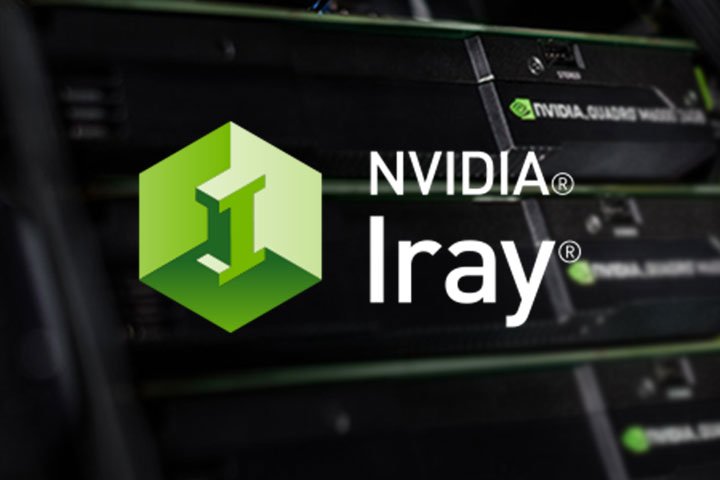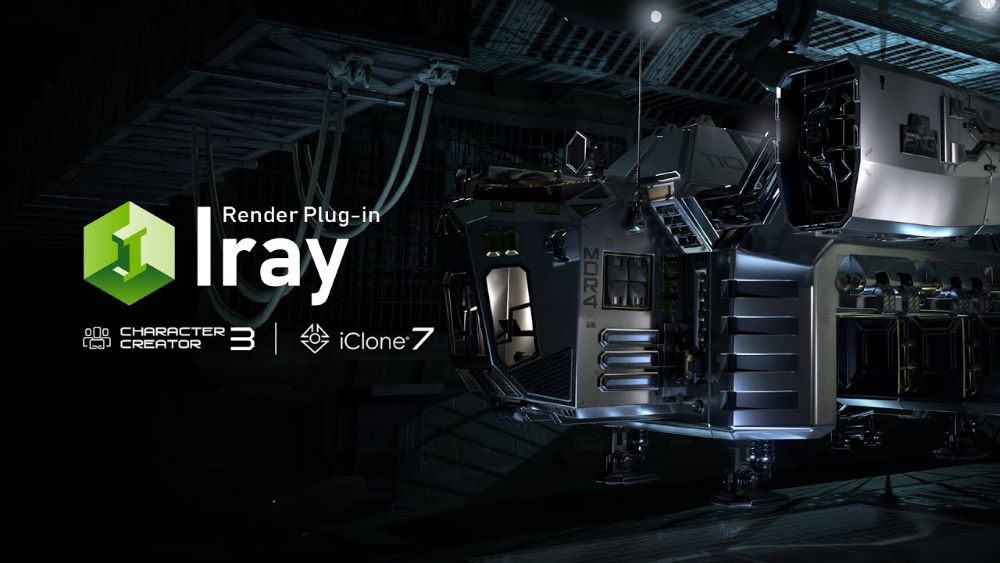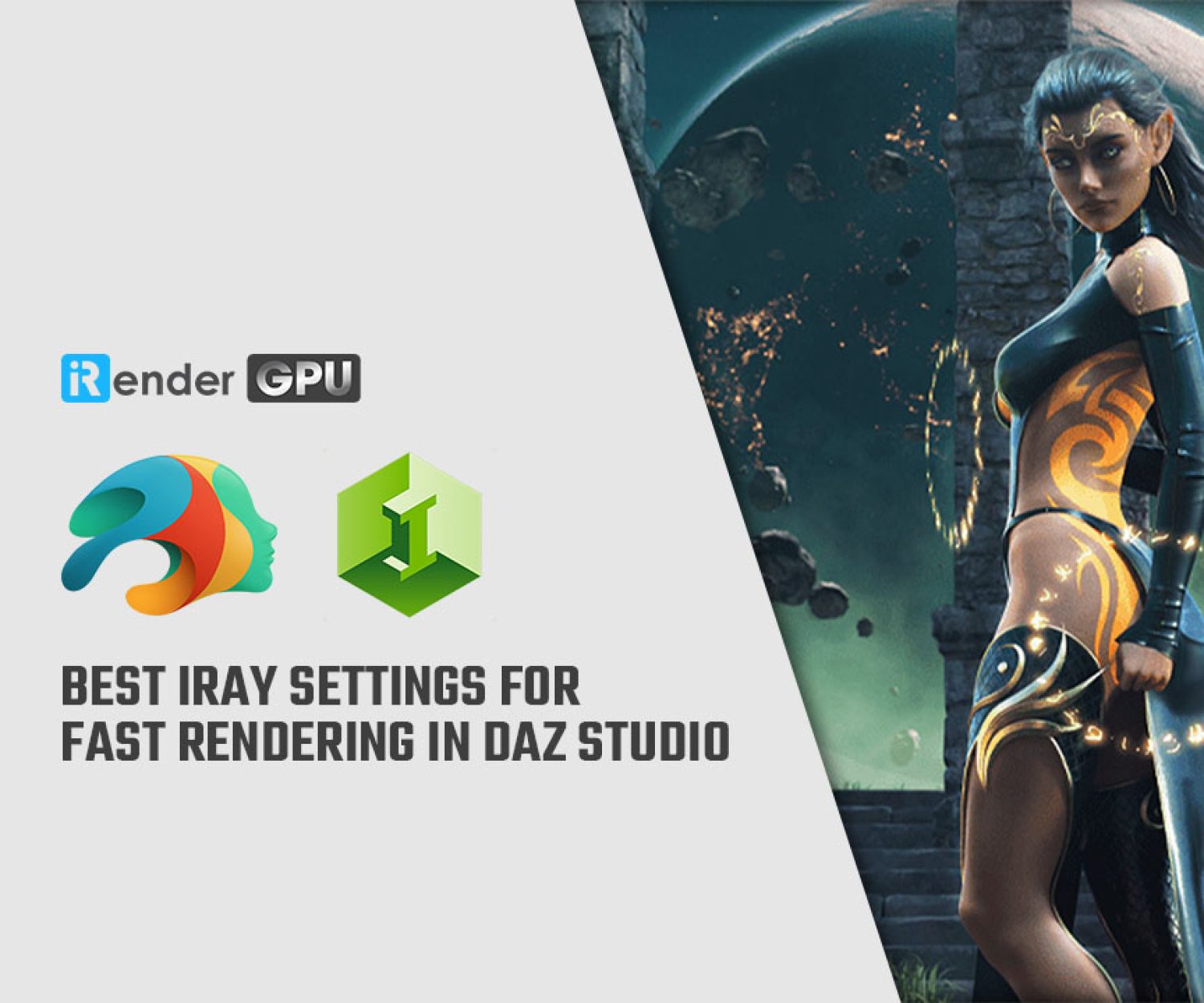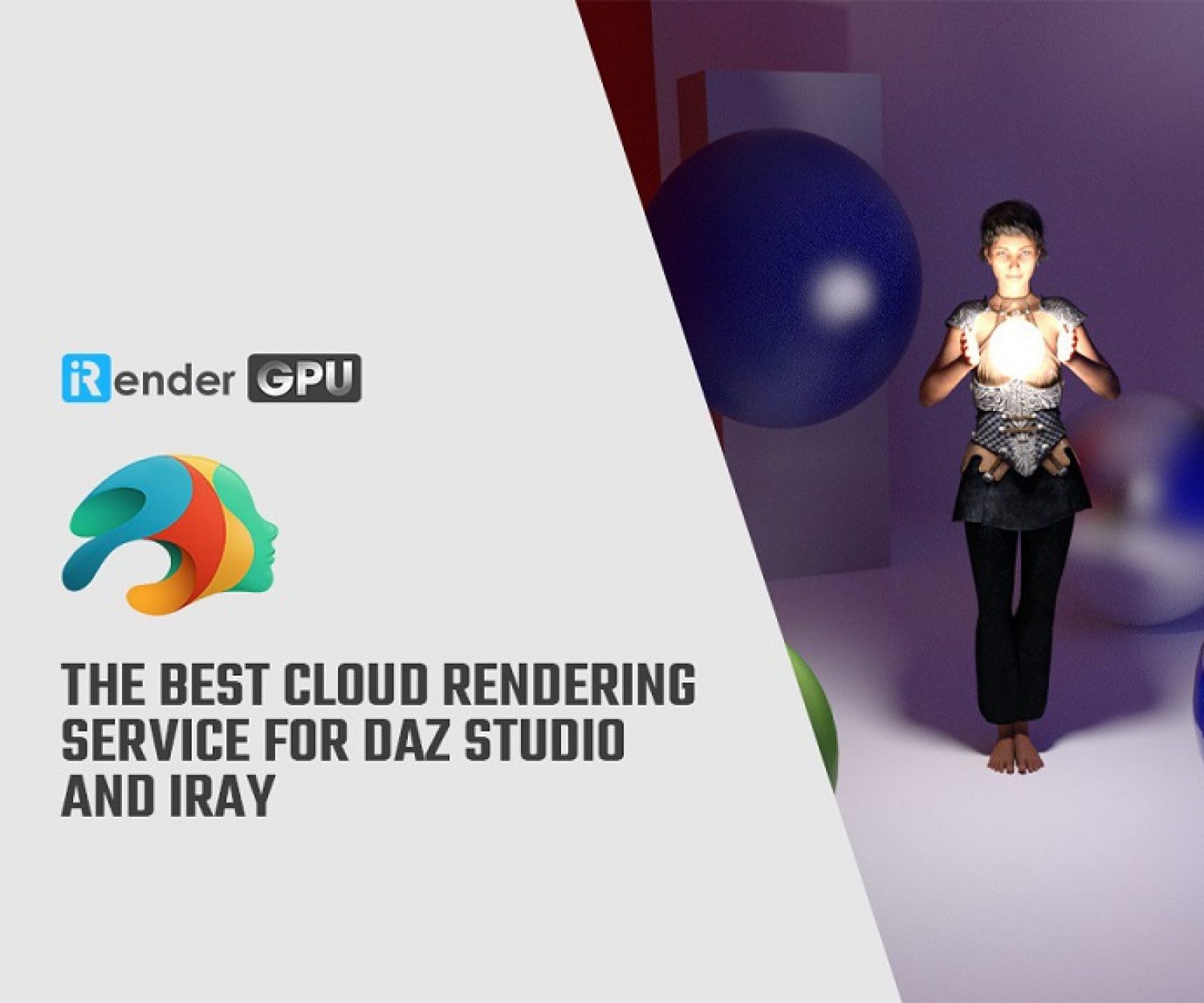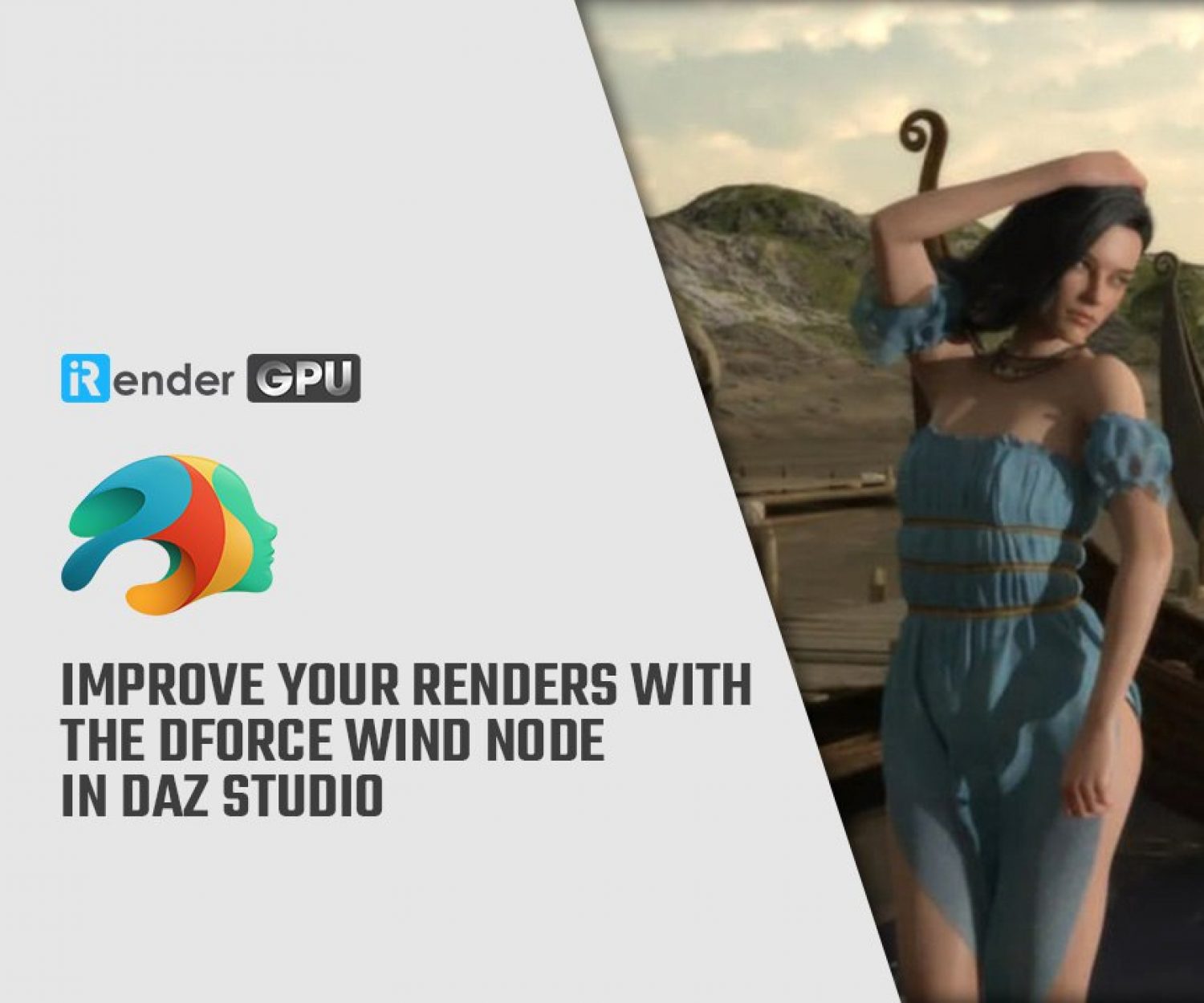Easy-to-use with Nvidia IRay Rendering
NVIDIA Iray is an intuitive physically based rendering technology that generates photorealistic imagery for interactive and batch rendering workflows. Leveraging AI denoising, CUDA, NVIDIA OptiX™, and Material Definition Language (MDL), Iray delivers world-class performance and impeccable visuals—in record time—when paired with the newest NVIDIA RTX™-based hardware.
Let’s find out about Nvidia Iray Rendering with iRender team through this article.
Nvidia Technology
The latest version of Iray adds support for RTX, which includes dedicated ray-tracing-acceleration hardware support (RT Cores) and an advanced acceleration structure to enable real-time ray tracing in your graphics applications.
- Nvidia RTX Support: In the 2019 release of the Iray SDK, all render modes utilize NVIDIA RTX technology. In combination with AI denoising, this enables you to create photorealistic rendering in seconds instead of minutes.
- Al Denoising: Using Tensor Cores on the newest NVIDIA hardware brings the power of deep learning to both final-frame and interactive photorealistic renderings. This unique capability speeds the completion of final images and smooths interactive rendering for a more rapid understanding of your scene’s composition and lighting.
- Nvidia Material Definitions Language: NVIDIA Material Definition Language (MDL) defines the properties of materials, ranging from the color of surfaces to their reflection or refraction properties to the light emission of surfaces. They even include additional surface geometric properties that are not commonly modeled in the primary geometric description of surfaces, such as cut-outs, displacements, or bump maps.
- Multi-GPU and Multi-machine set up: Iray supports any number or combination of GPUs and CPUs running within the same machine and gives you control over which ones are being used for rendering. This makes multi-GPU systems the preferred choice for Iray applications, even on cloud-based systems.
Nvidia Iray Features
NVIDIA is continually evolving the Iray feature set to improve the physically-based 3D and VR rendering workflows of designers and digital artists.
| Category | Feature | Description |
| Advanced | Decals | Place multiple double-sided Stickers on objects. |
| Instancing | Memory savings, and immediate updates of animated objects. | |
| Rounded Corners | Show highlights even if chamfers or filets are not explicitly modeled. | |
| Section Planes | Multiple cross-section planes are optionally closed with caps. | |
| Camera | Depth of Field | Efficient implementation of depth-of-field, optimized for each rendering mode. |
| Motion Blur | Provides an idea of motion in still images, and of fluidity in rendered animations. | |
| Panoramic Snapshots | Render out cylindrical or spherical maps. | |
| Stereo Viewing | Separate camera settings for the right and left eye to achieve a 3D stereo output. | |
| Compositing | AOV Output | Support for the output of buffers which store various additional image information. |
| Bloom | Post-process to add bloom and glare. | |
| Line/Toon Renderer | Render any scene in a toon and/or hidden line style. | |
| Matte Objects | Matte objects can be defined as stand-ins for already existing elements in the environment or backplate. | |
| Lighting | Caustics | Rendering algorithms can simulate very complex light paths, such as those which create caustics. |
| Emissive Geometry | Realistic, physically-based lighting model which produces desirable effects, such as soft shadows; simple and natural to set up. | |
| LightPath Expressions | Separation of different types of light paths into different frame buffers. | |
| Luminance Distribution | Render color-coded image to determine luminance. | |
| Photometric Lights | Realistic lighting based on measured data. | |
| Sun/Sky | Interactive sun & sky system based on physical models. | |
| Materials | Hair/Fur | Render spline based fur/hair geometry with MDL based material description. |
| Measured Materials | Easy drop-in usage of measured materials via MDL. | |
| Subsurface Scattering | Simulation of material interactions that occur below the surface. | |
| Volume Rendering | Simulation of interactions that occur within a volume. |
Take a look at this document to get a full list of Iray features.
What’s more?
Several integration partners have already created state-of-the-art integrations that give you access to Iray within these popular 3D content creation applications: Autodesk Maya, Autodesk 3ds Max, and McNeel Rhinoceros. That’s the Iray Plugin which is the tool you need to bring your ideas to life.
List software applications with IRay integrated include:
- Allura: developed by Render Plus Software, seamlessly integrates Iray+ into SketchUp to create stunning renderings from your SketchUp models.
- BloomUnit: a solution enabling SketchUp users to interactively create photorealistic results using Iray, with the flexibility and convenience of cloud computing.
- CATIA: a paradigm shift in PLM for system engineering by providing multi-discipline dynamic behavior modeling and simulation.
- SOLIDWORKS Visualize: is software agnostic, which means designers, engineers, and content creators can use SOLIDWORKS or other CAD creation tools (Rhino, Autodesk Alias, 3ds Max) to design their models.
- Patchwork 3D: its real-time 3D rendering software suite, enables the creation of advanced DAMs with complex illumination and animation.
- Daz Studio: is a free application that enables creators and artists to visualize their imagination.
- ProWalker GPU: created by Cadalog, Inc. provides SketchUp users with photorealistic, interactive rendering of still images and animations.
- NX from Siemens PLM Software: gives you the power to drastically improve the way you develop products in an open, collaborative environment.
- Substance Designer: The industry standard for creating custom materials.
- Substance Painter: with this powerful app, you can paint 3D textures on your model in real-time.
- Synchro’s 4D: Building Information Modelling (BIM) platform is fundamentally changing how construction projects are delivered with Iray functionality that gives users access to complex lighting simulation, and exchangeable, physically based materials, which aid in the creation of high-quality visuals and animations locally or in the cloud.
iRender is one of few render farms that support special software such as Nvidia Omniverse, Nvidia Iray. Also, iRender is a GPU-Acceleration Cloud Rendering Service for Multi-GPU Rendering.
We provide plenty of both GPU and CPU servers for you. They are very powerful and top-of-the-line hardware cause we always try to upgrade configurations regularly. You retain complete control of our server. Do not share the performance of configuration with others while you use it.
Besides, iRender’s workflow is simple and easy. You need to create an image and then boot a system. Next, you connect to our remote servers and take full control of our machines. There you can install any software that you want.
All steps to start using service via below video, you should take a look:
We always would like to contribute a part to a creative project. If you are in the 3D Production pipeline and go into the Rendering process, it’s time to take a chance for iRender service. Pick a server and enjoy it by CREATING AN ACCOUNT right now!!!
 www.nvidia.com
www.nvidia.comRelated Posts
The latest creative news from Daz3d Cloud Rendering, Nvidia Iray Cloud Rendering , Nvidia Omniverse Cloud Rendering , Octane Cloud Rendering, V-Ray Cloud Rendering , 3D VFX Plugins & Cloud Rendering.

